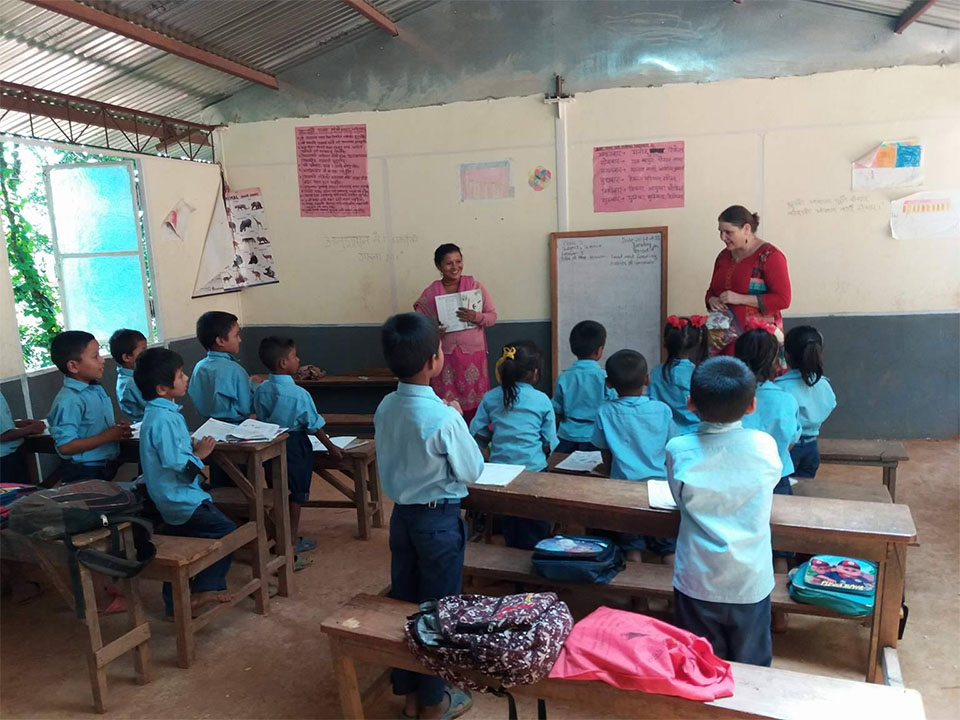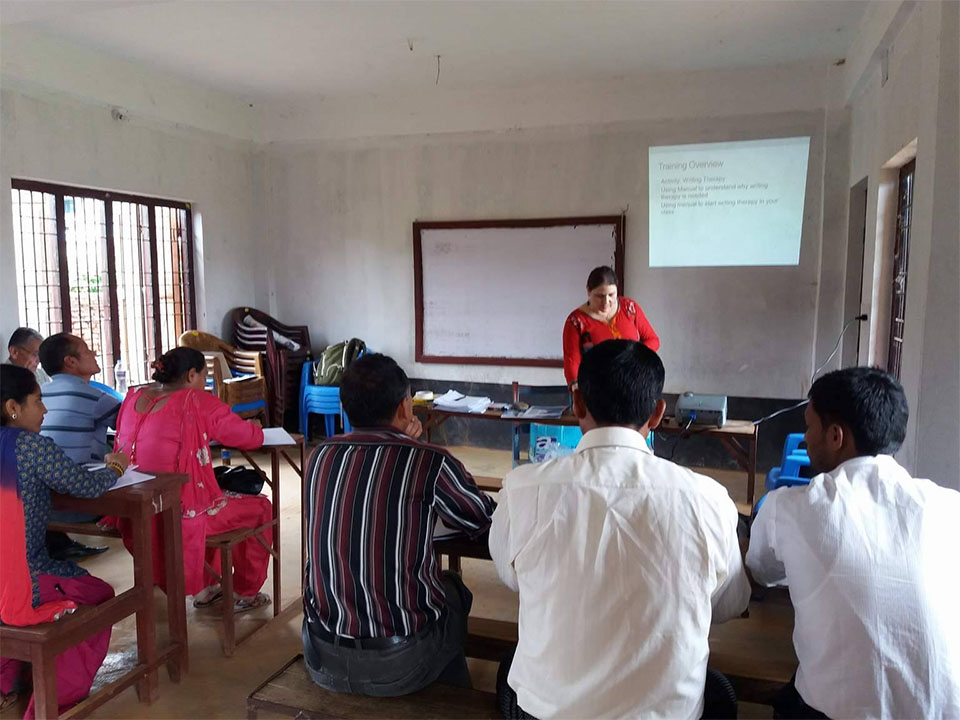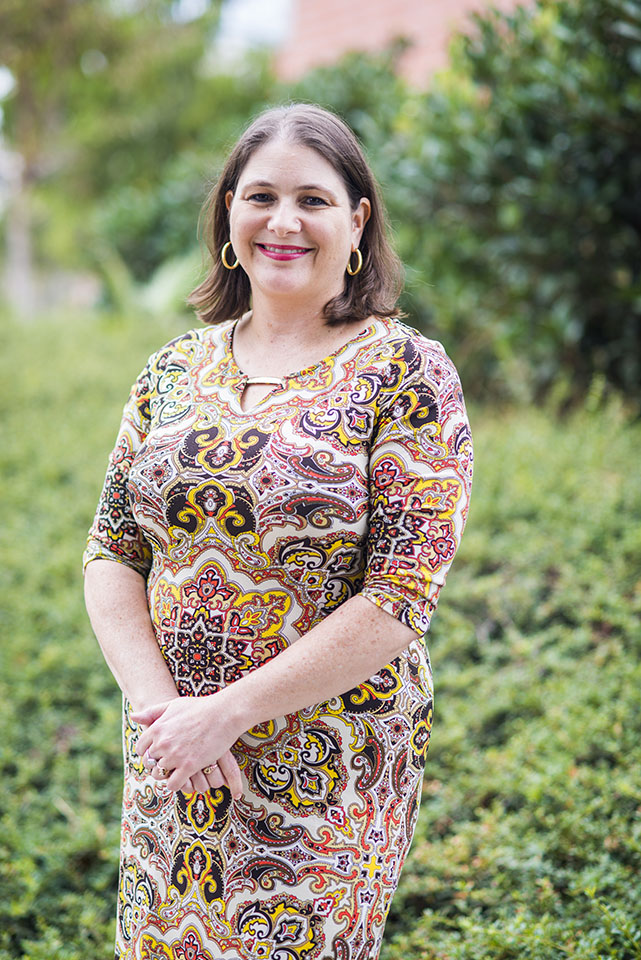CSUN Prof Trains Teachers in Handling Trauma After Natural Disasters
Jo Anne Pandey’s husband roused her in the middle of the night. At first, she couldn’t believe the bad news he shared.
“My husband found out about the earthquake through Facebook,” said Pandey, a part-time faculty member in the Department of Child and Adolescent Development at California State University, Northridge.
It was April 25, 2015, and a 7.8-magnitude earthquake had just rocked Kathmandu, the capital of Nepal, and its surrounding areas. The temblor had killed thousands of people, destroyed homes, schools and infrastructure. Desperate for information, Pandey and her husband, who is Nepalese, turned on their television, while simultaneously trying to contact their family in Kathmandu.
“It was devastating to think of all the temples that had been there for hundreds of years [now being demolished],” Pandey said.
“Living in California and knowing the destructive power of an earthquake, I knew that this magnitude was going to be disastrous,” she continued. Her husband’s family lived right near the epicenter, where aftershocks went on for several months. “My mother-in-law got motion sickness, because there were so many [aftershocks],” Pandey said.
Pandey combined her relation to Nepal and her professional expertise to set up a research project which could be useful in responding to similar situations, helping children to cope with trauma. In the face of recent quakes such as the one on the Iran-Iraq border, her work gains particular relevance.
Pandey visited Nepal for the first time in 1992. She studied abroad for one semester as an undergraduate from Pitzer College in Claremont, studying psychology and anthropology. During her stay, she got to know her future husband.
“I really connected with the culture and learned the language,” Pandey said. “I became interested in going back and in engaging.” After graduation, she returned to Nepal and taught English for a year. During that time, her husband was studying in Nebraska.
When the 2015 earthquake struck, Pandey felt deep concern and compassion for the Nepalese. “I traveled there just a few months after the earthquake and saw the devastation, and how people were living in temporary shelters,” she said. “I knew that we needed to do something.”
Pandey harnessed her teaching experience in Nepal and familiarity with the local education system to reach out and provide help. She contacted the National Center for Educational Development in Nepal and organized a training for Nepalese teachers, educating them on how to help students and colleagues cope with trauma.
“At first, I contacted the Nepalese government to find out about earthquake relief help for children. They told me that schools were handling it,” Pandey said. “To me, it seemed to be a difficult task that was passed on to teachers in that situation.”
Nepalese teachers, as far as she knew, had not received training in mental health issues or the social and emotional development of children, Pandey said. She set up a training program to educate teachers about writing therapy.
“The idea was to find something that would help [children] coping with emotional trauma from the earthquake, but also have strong ties to an academic context,” Pandey said. By writing in a journal about their emotions and feelings, she said, people can relieve stress after traumatic experiences.
She continued her educational work with the Gorkha Foundation, a nonprofit, grassroots organization supporting underprivileged people in Gorkha, Nepal. In the aftermath of the earthquake, the foundation was rebuilding 15 schools and organized a training session with Pandey for the school’s teachers.
“It was very rewarding,” Pandey said. “The teachers told me, ‘We really need this. We never had any idea that we would need this, but as you talk about it, it resonates so much.’”
“People were hiding their feelings, until they were really asked to talk about it,” said Bijaya Devkota, founder and director of the Gorkha Foundation.
Pandey was happy to contribute, but she was not quite satisfied. She wanted to do more, she said.
To expand her training program, Pandey applied for a Community Engagement Interdisciplinary Grant from CSUN’s Office of Community Engagement, which supports faculty members in creating service-learning projects.
Pandey linked the project to her Applied Cognitive Development Class in fall 2016 and, with her CSUN students, created a discussion and activity guide for Nepalese teachers.
“We conducted and compiled research on different developmental ages of children,” Pandey said. The final product was a teacher’s manual on how to support children coping with trauma from natural disasters. A professional translator is currently working on translating the manual into Nepali, and then the Gorkha Foundation will distribute it to teachers in that country.
Taking her research a step further, last spring Pandey applied for the CSUN Research, Scholarship and Creative Award (RSCA), a grant that supports faculty research. She wanted to investigate whether her efforts have been effective. Pandey won the grant and is currently collecting data at three schools in Gorkha. About 200 students from fourth to eighth grade participate in the research.
“The goal is to find out if there is any reduction of psychological issues after engaging in writing therapy,” Pandey said. The project also aims to gather general mental health information about Nepali children and study the long-term mental health effects of significant natural disasters, she said.
“Without research, it is hard to justify what needs to be done,” Devkota said. “The research helps a lot to urge the government to take action.”
“The data could also be very helpful in case of other events like this,” Pandey said, referencing the recent, devastating quakes in Mexico. “I would like to see if the manual and the writing therapy are effective. If so, it would be great if more schools would adopt it.”
For more information about the Gorkha Foundation, please visit their website: http://www.gorkhafoundation.org
Jo Anne Pandey’s children Akash and Harmony started a crowdfunding campaign to support children in Nepal. In August 2016, the project was acknowledged by then-President Obama. For more information, visit http://www.bykids4kidsofnepal.org/








 experience
experience